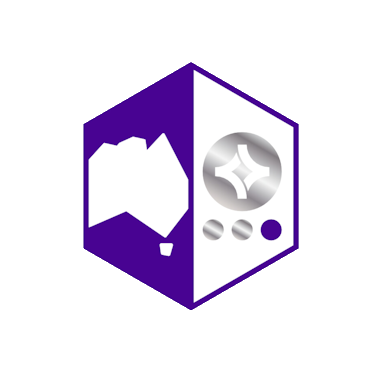In a week defined by breakthroughs and bold moves, the world of artificial intelligence dazzles with cinematic pace and ambition. From sparking circuits to billion-dollar acquisitions, the latest developments have set the stage for a transformative era. The unveiling of the GPT‑4.1 family, accompanied by whispers of an export of the “Stargate” data‑centre venture to Britain, has captured the attention of tech enthusiasts, investors and policymakers alike. With enhanced reasoning and a monumental 1‑million‑token context window as described in “higher reasoning and code scores” (https://arstechnica.com), the race for the next AI leap has never been tighter.
Beyond these headline-grabbing announcements, subtle innovations continue to fuel the industry’s dynamism. Reports indicate that OpenAI’s “o3” models, launched just “48 hours ago” (https://openai.com), are setting new standards in chain‑of‑thought control, promising to refine our approach to both math and code. This sense of unbridled innovation not only cements AI’s pivotal role in modern technology, but it also sparks the imagination of developers across the globe.
Big‑Model & Tooling Updates
OpenAI has once again captured attention by debuting the GPT‑4.1 family, a model that not only boasts a 1‑million‑token context window but also delivers improved reasoning and code proficiency. This new release includes “mini” and “nano” variants which aim to provide more cost‑effective solutions for local tool‑use workflows, marking a critical evolution in model efficiency and practicality.
In tandem with this, the launch of research models such as the “o3” and “o4‑mini” has set the scene for further refinement in algorithmic precision. Paired with a simulated‑reasoning CLI and a $1 million developer grant, these updates underscore a commitment to empowering developers to craft solutions that push the boundaries of current AI capabilities.
Industry Moves & M&A
In a dramatic twist this week, OpenAI has entered into advanced talks to acquire a leading coding‑assistant start‑up. This deal, rumoured to be a component of the Windsurf package valued at over $3 billion, represents “the largest deal to date” (https://axios.com). Such a strategic acquisition highlights the increasingly aggressive consolidation efforts aimed at integrating innovative coding technologies.
Meanwhile, speculative reports indicate that OpenAI’s ambitious “Stargate” hyperscale data‑centre venture could soon extend its reach “beyond its initial U.S. footprint” (https://www.reuters.com) and into Britain. This move signals not only a global expansion but also redefines the collaborative frameworks that underpin the development of cutting‑edge data infrastructure.
Hardware & Infrastructure
At Nvidia’s GTC 2025, the hardware arena was revolutionised with the launch of the Blackwell Ultra GPU, promising speeds “up to 40× faster per‑watt” (https://venturebeat.com). This introduction marks a significant leap in computational efficiency, ensuring that AI developers have the infrastructure needed to meet increasingly complex challenges head-on.
Additionally, Intel has had a major organisational shake‑up under its new CEO, with Sachin Katti being promoted to Chief Technology & AI Officer to “consolidate all AI silicon and research teams” (https://www.reuters.com). Innovations such as the Isaac GR00T N1 humanoid‑robot foundation model further underscore strides in advancing robotics and autonomous systems to new heights.
Funding & Start‑ups
Emerging start‑ups continue to add a vibrant edge to the AI landscape. Virtue AI, for example, has successfully raised $30 million in its seed/Series A round, positioning itself as the “red‑team & guardrails for enterprises” (https://axios.com) in the increasingly critical domain of AI security. Such investment not only fuels technological advancements but also reinforces the strategic importance of cybersecurity in this digital age.
In parallel, Saronic secured a monumental $600 million megaround for autonomous naval drones, marking “the biggest cheque this week” (https://news.crunchbase.com) in the defence sector. These funding moves, reflective of robust investor confidence, help steer the industry towards innovative integrations of technology with national security applications.
Policy, Safety & Governance
Governments around the world are stepping up to shape the future of AI with robust regulatory frameworks and policies. The United Nations has released the “Governing AI for Humanity” blueprint, which proposes a “distributed global oversight architecture” alongside seven concrete risk‑mitigation steps (https://digitallibrary.example.com). This initiative aims to set a global standard, inspiring similar regulatory efforts internationally.
Meanwhile, the UK AI Safety Institute has committed grants to support “20 systemic‑risk research projects” (https://aisecurityinstitute.org), reinforcing the nation’s commitment to secure and responsible AI development. In Europe, a detailed implementation timeline for the AI Act ensures that even as advanced AI becomes integral to modern society, there is a proportional push for safety and oversight as illustrated by “a granular implementation timeline” (https://artificialintelligenceact.example.com).
What to Watch Next

As the AI ecosystem continues to evolve, industry observers are eagerly anticipating further transformative announcements. Nvidia is notably preparing to ship its Blackwell developer kits to select early partners, with tech benchmarks eagerly awaited by the community. This transition promises to refine the capabilities of next‑generation AI computing.
Meanwhile, policy developments remain in focus with high‑profile U.S. Congressional hearings on AI copyright and discussions on cyber‑security scheduled for 22–23 April. On the innovation front, OpenAI is poised to open the public beta for its GPT‑4.1 nano model on mobile platforms, a move that may revolutionise portable AI applications and further consolidate its market dominance.
Sparks of Tomorrow
In an industry where each breakthrough acts as a spark that illuminates the vast canvas of technological evolution, this week’s events have painted a vibrant picture of a future in flux. With significant strides in model efficiency, strategic mergers and substantial investments, the AI landscape is rapidly transforming into a dynamic and competitive ecosystem.
This montage of rapid advancements and strategic recalibrations sets the stage for an exciting period ahead, reminding us of the eternal interplay between technological innovation and regulatory evolution. As we decode these trends, every tick of the clock offers a new chapter in the unfolding saga of AI.
In Other News…
🧑💼 Workplace & Productivity
Slack Introduces AI-Powered Search Copilot
Slack has launched its AI-driven Search Copilot, enabling users to retrieve information across Slack messages, meetings, and integrated tools directly within the platform. This feature aims to enhance productivity by reducing the need to switch between applications. Read Help Center
IBM Enhances Developer Tools with Watsonx Code Assistant
IBM’s Watsonx Code Assistant now supports a broader range of programming languages, including Python, Java, C++, and Go. The tool leverages generative AI to assist developers in code generation and modernisation efforts, aiming to improve efficiency and reduce the learning curve for complex coding tasks. IBM Developer
🎨 Culture & Copyright
Hollywood Creatives Advocate for AI Copyright Regulations
Over 400 actors, writers, and directors have signed an open letter urging the U.S. government to enforce strict copyright laws concerning AI-generated content. They express concerns that AI companies are exploiting existing works without proper authorisation, potentially undermining the creative industry. CBS News
💬 AI in Daily Life
AI Chatbots Becoming Emotional Companions
A growing number of individuals are forming emotional connections with AI chatbots, using them for companionship and support. While some find comfort in these interactions, experts caution about the depth and authenticity of relationships with AI entities. The Guardian
AI Chatbots in Mental Health Therapy
AI-powered chatbots are increasingly being used to provide mental health support, offering immediate assistance and coping strategies. While they are not replacements for professional therapy, these tools can serve as supplementary support, especially in areas with limited access to mental health services. The Week


